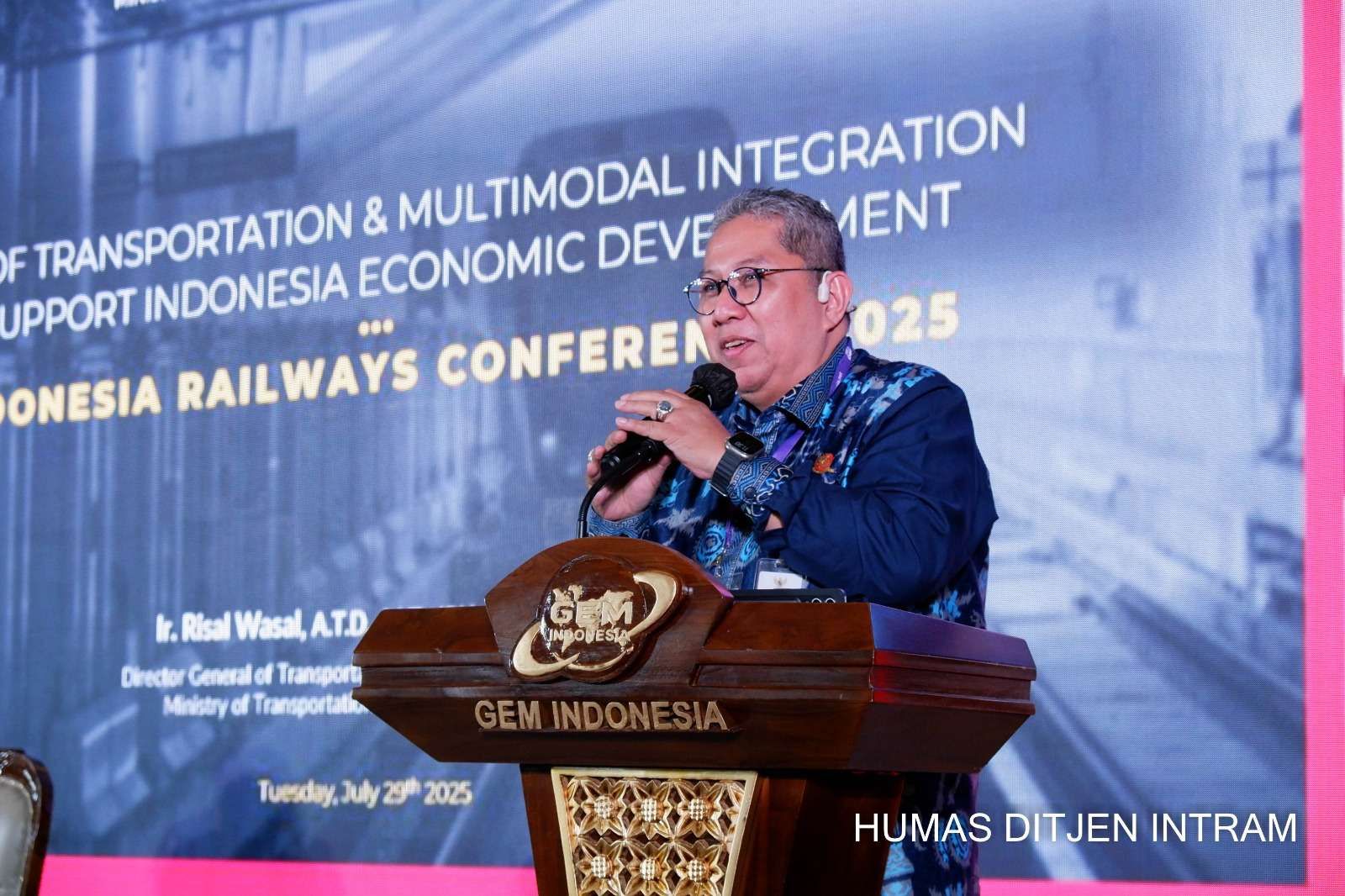Indonesia Pushes Integrated Transport to Boost Economy
Jakarta: The Directorate General of Transport Integration and Multimodal (Ditjen Intram) at the Ministry of Transportation has emphasized the importance of building an integrated transport system to improve logistics efficiency, reduce carbon emissions, and accelerate national economic growth. This was conveyed by Director General of Ditjen Intram, Risal Wasal, during the 2025 Indonesia Railway Conference held at JIExpo Kemayoran, in Jakarta, Tuesday (29/7/2025).
“Indonesia faces various transportation challenges, from severe traffic congestion, high logistics costs, to the dominance of road-based transport. The solution lies in developing a truly integrated system across modes and regions,” said Risal Wasal.
He stressed that transportation is not just about infrastructure, but about building a connected and seamless service ecosystem.
“We must change our mindset. Transportation is not only about constructing roads or railways, but ensuring every mode supports one another, ticketing is unified, and users can switch modes without hassle. This is the vision of modern transportation we’re working on,” he explained.
In his presentation, Risal noted that the massive use of private vehicles—140 million motorcycles and 20 million cars—has led to severe congestion and high carbon emissions, especially in urban areas. In Greater Jakarta alone, transportation contributes 270 kilograms of carbon emissions per day, accounting for 79 percent of the region’s total emissions.
He also highlighted that Indonesia’s logistics costs stand at 14.29 percent of its GDP—significantly higher than other ASEAN countries. The country's Logistics Performance Index remains low at 3.0, compared to Singapore (4.3), Malaysia (3.6), and Vietnam (3.3).
“Integrating infrastructure and services across transport modes must be a top priority. A well-connected transport system not only eases mobility but also boosts productivity, supports equitable development, and strengthens national logistics competitiveness,” he added.
Successful integration initiatives include the Transit Oriented Development (TOD) area at Dukuh Atas and the Halim KCJB Station, connecting high-speed rail, LRT, TransJakarta, ride-hailing services, and pedestrian access. In Dukuh Atas, this integration has increased property values by up to 50 percent and revived the local business district.
Ditjen Intram has developed a 2025–2029 roadmap for intermodal and multimodal integration, covering key transport nodes such as ports, stations, terminals, airports, and strategic national areas across the archipelago—from Sumatra to Papua.
Looking ahead, the agency is pushing for the adoption of Mobility as a Service (MaaS), a digital mobility platform that integrates various transport services into a single system.
“MaaS allows people to switch modes easily and efficiently, reducing their reliance on private vehicles,” said Risal.
He called on all stakeholders, from central and local governments, transport operators, businesses, to the public, to collaborate in creating an integrated, sustainable, and inclusive transportation ecosystem.
“Integrated transport is not just about connectivity. It’s about ensuring mobility justice for all Indonesians,” Risal concluded.
















